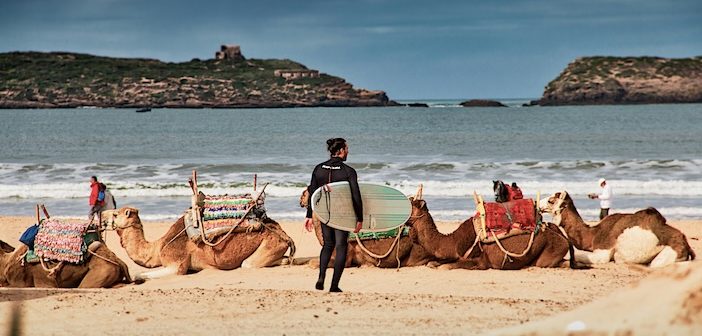It’s irresistible, that mix of beauty and sheer mayhem, that is Marrakech. So leaving is actually quite hard to do. But there’s more to Morocco than one city, however many its charms, and this is a country that has, for starters, far more than its fair share of beautiful golden beaches.
There are, of course, two coastlines, the western one faces the Atlantic Ocean, the northern one is on the Med. Mostly, this is virgin territory for tourism – with the notable exception of party town Agadir. It’s not surprising then that it’s quieter than Marrakech, prices are lower and you can even browse in peace when you’re shopping.
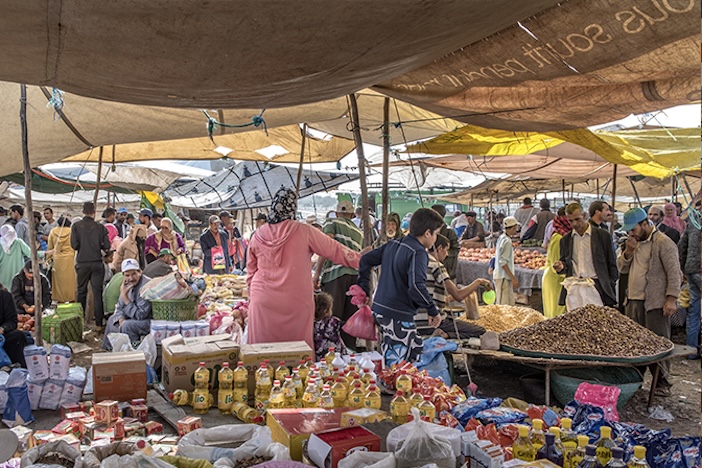
Just up the Atlantic coast from Agadir is Essaouira and, like Agadir, it has a dazzlingly beautiful waterfront with a wide expanse of golden sand and a wide corniche. It’s renowned for its sea breezes and, as a result, has plenty of water sports, with shops hiring out the kit and trainers to teach you how to use it. You don’t even have to get into the water for seaside adrenalin – there are horses and camels you can ride on the beach (particularly romantic at sunset, of course).
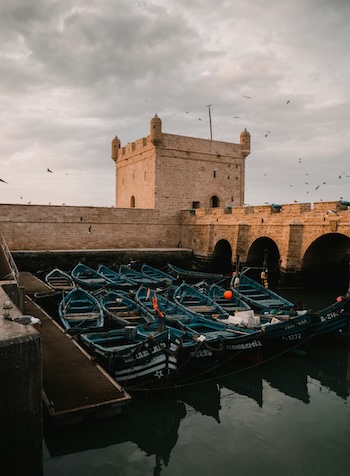
Photo by Youssef Aboutaleb, courtesy of Unsplash
Where the beach ends, the fishing port begins and there are stalls set out by the fishermen selling their catch of the day. They have grills where they’ll cook whatever you choose – and the choice is enormous, from lobster to sea bass, eels to spider crabs. Served up with salad and bread, it costs around £10 and is as fresh as it gets.
A five minute walk from the fishing port and you’re in the small but perfectly formed medina, the handsome walled old city that was formerly known as Mogador (it’s also the real Astapor in Game of Thrones). The medina itself is now a UNESCO World Heritage Site and houses an extensive souk, or market, where you can buy, among much else, all things argan. It’s a tree that grows only between Essaouira and Agadir, despite attempts to transplant it elsewhere, and its nut produces – with some effort – an oil that is used in the local cuisine, as a medicine and, most famously, as a cosmetic. If you ever have a hankering for Nutella, try instead Amlou – a blend of argan oil, almonds and honey which is not just more delicious but a great deal healthier.
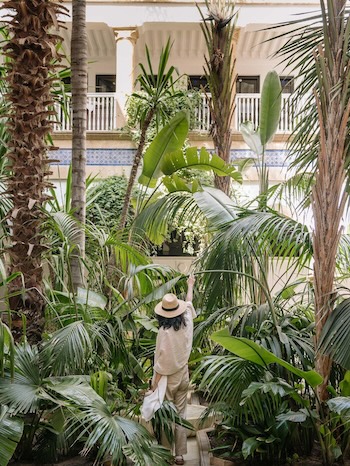 Stay at the Relais & Chateau riad Heure Bleue, just inside the medina’s walls. There’s a fine dining restaurant, an “English” bar (complete with leather sofas and animal heads on the walls), a palm-filled central courtyard for breakfast and afternoon tea and a rooftop with a bar, swimming pool and fabulous views across the town. The rooms are enchanting. When I arrived I discovered the word “Marhaba” written in rose petals on the bed (it means hello or welcome). The building itself is an old caravanserai (a stopping place for merchants on the silk road) and all the rooms are extensive and look into the central courtyard. If you feel a bit chilly, they’ll light your bedroom wood burner.
Stay at the Relais & Chateau riad Heure Bleue, just inside the medina’s walls. There’s a fine dining restaurant, an “English” bar (complete with leather sofas and animal heads on the walls), a palm-filled central courtyard for breakfast and afternoon tea and a rooftop with a bar, swimming pool and fabulous views across the town. The rooms are enchanting. When I arrived I discovered the word “Marhaba” written in rose petals on the bed (it means hello or welcome). The building itself is an old caravanserai (a stopping place for merchants on the silk road) and all the rooms are extensive and look into the central courtyard. If you feel a bit chilly, they’ll light your bedroom wood burner.
From Essaouira, you take the road north along the Atlantic coast to Oualidia (pronounced Walidia). It’s the opposite of Marrakech, small and sleepy, more of a village than a town. Its unusual coast is dominated by a salt water lagoon that’s shielded from the Atlantic by a series of islands. There is a big tide that twice daily fills the lagoon and washes the many oyster beds for which Oualidia is famous – the lobsters and crabs are pretty good, too.
The name comes from Oualid, the ruler who built a fort here that still stands on the hillside and there are the remains, too, of a rather beautiful waterside palace built by the present king’s grandfather, Mohammed V. It’s an oasis of tranquility and a birder’s paradise – all kinds of gulls, storks, waders and flamingos.
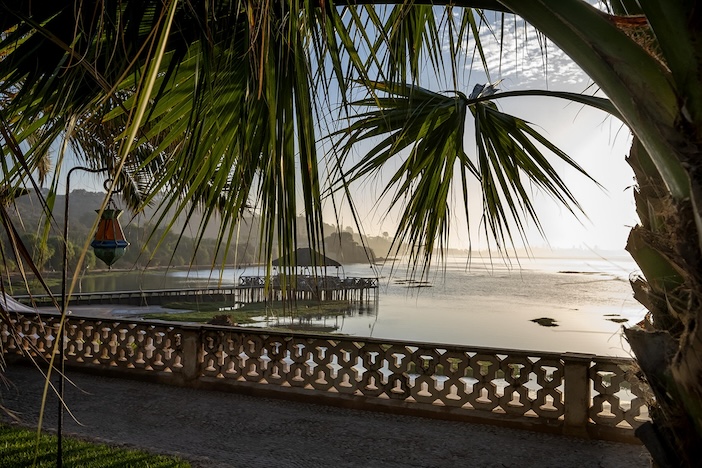
There’s a weekly Berber market in the village and restaurants specialising in oysters and other seafood. There’s a La Sultana hotel here, too, that is arguably the most beautiful anywhere on the Moroccan coast. Built next to and, in part, over the lagoon, it has a boardwalk out to a pavilion where at high tide you’re surrounded by water.
Built as a small golden palace, its sandstone walls house just 12 suites, all with their own outside space and jacuzzi, as well as a swimming pool that seems to hover over the pool, a beautiful heated indoor pool, part of an extensive spa (hammams a speciality) and two restaurants where you choose your own lobster or crab from the fish tanks. If you can tear yourself away, the concierge arranges boat trips and birdwatching, surfing and horse-riding, or picnics and bbqs out on the islands.
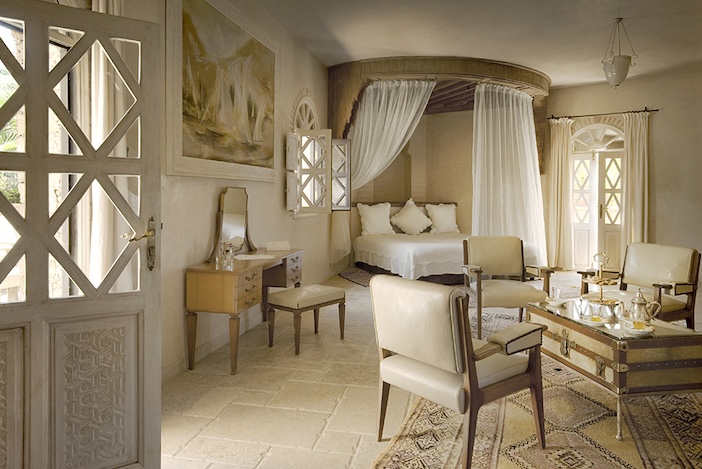
The Marrakech Express? Forget it. The new TGV high speed train from Rabat and Casablanca to Tangier has made moving around Morocco far easier than it has been in the past. There are plans for many more TGVs connecting Marrakech and Agadir to the network all in time for the 2030 World Cup that Morocco is holding jointly with Spain and Portugal. Tangier is the gateway to the Mediterranean coast and a very different landscape, more like Tuscany than our idea of this north African country. There are mountains and rivers, lakes and hillsides all clothed in lush greenery and fertile farmland producing olive oil and salads, grapes (there are some delicious Moroccan wines, incidentally) to legumes.
Tangiers itself is a big prosperous city and port but, not far away, is Tetouan, its old town (or medina) a revelation – one of the most authentic you’ll find in Morocco, I didn’t meet a single other traveller during an entire morning. It was built by the Moors and Jews who fled Spain when the country was unified under the Catholic Monarchs, Ferdinand and Isabella, who expelled everyone of a different religion. Just a few miles over the Med from southern Spain, the north of Morocco was the obvious place to go. An interesting legacy of that history is that the signs in the medina are in two languages – not French, the ubiquitous second language of Morocco, but Spanish.
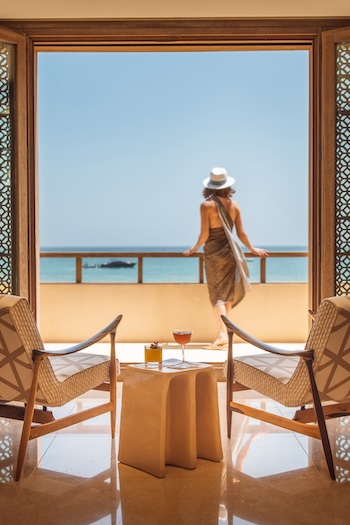 Close to Tetouan is Tamuda Bay, the Moroccan riviera. This is where the king takes his summer holidays on his private beachfront but he has also built a hotel, the third of his brand, Royal Mansour, right next door. Royal Mansour, Tamuda Bay has its own 700-metre private beach and, while the king is not likely to be strolling along it, you’ll know when he’s around as he also has a couple of yachts anchored just off shore.
Close to Tetouan is Tamuda Bay, the Moroccan riviera. This is where the king takes his summer holidays on his private beachfront but he has also built a hotel, the third of his brand, Royal Mansour, right next door. Royal Mansour, Tamuda Bay has its own 700-metre private beach and, while the king is not likely to be strolling along it, you’ll know when he’s around as he also has a couple of yachts anchored just off shore.
The resort is brand new and simply gorgeous. There are 55 villas and suites, designed with impeccable attention to detail and acres of space. They all have considerable outside space, too, and the front row villas have private pools that lead straight on to that beautiful sandy beach. It’s a super-luxury destination (fit for a king you might say) and, as you’d expect, the dining options are impressive.
There’s Coccinella with its tantalising Italian flavours; Le Mediterranée on the water’s edge features Spanish chef Quique Dacosta’s take on seafood; and La Table, fine French dining created by Chef Eric Frenchon. The setting is stunning, with the cliffs of Cabo Negro to one side, the Spanish enclave of Ceuta on the other while, ahead is the indigo blue sea, beyond which at night you can see the lights of the European coast twinkling in the distance.
Header photo: Essaouira beach by Peter Schulz, courtesy of Unsplash

